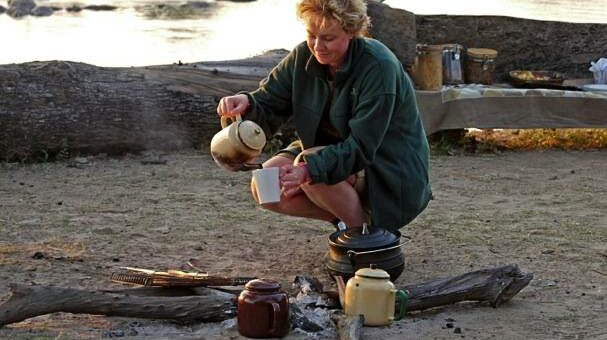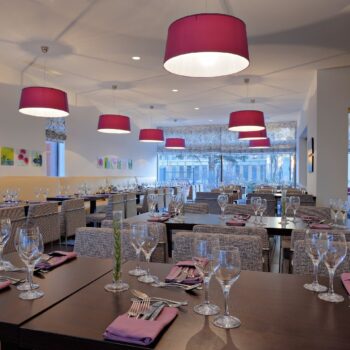
My Time in Zambia
- Posted by Stefan
- On 11. September 2016
On Tuesday, May 10th, twenty-six BWC members met for our monthly treat of a delicious meal followed by an interesting talk. This time our speaker was club member, Charlotte W. Charlotte, who was born in Africa, but left as a small child, decided to return after having given up a high-powered job with Mont Blanc to test where her roots lie by taking up a job as a Bush Camp Manager in Zambia. During her talk she shared her memories and many anecdotes about life in Zambia during this period.

South Luangwa‘s National Park was founded in 1938 and became a National Park in 1972. The park covers 9,050 km² with over 40 kinds of different animal species including lion, leopard, buffalo, elephant and Thornicroft giraffe – unique to the Luangwa valley – as well as the highest density of hippos and crocodiles in the river. And with over 400 species of birds, South Luangwa is a birdwatchers paradise. Even the elephants visited the camp!
Norman Carr established Luangwa’s first safari camp in 1950. Back in the days when an African safari was a hunting experience, Norman developed the pioneering idea of taking people to look at animals and photograph them rather than to shoot them.
The first safari camp was set up in partnership with the then Paramount Chief Nsefu and his people. This idea of involving the local people in the management of the wildlife was way ahead of its time. It was almost 50 years later that conservationists started developing the principles of “Community Based Natural Resource Management”, in other words encouraging the traditional owners of the natural resource to take responsibility for its usage. Norman Carr’s pioneering approach proved to be the forerunner to a cornerstone of modern day conservation policy.
The first 35 years of the company saw Norman set up and establish a number of safari camps across the Luangwa Valley, some of which are still in existence – Nsefu, Lion Camp, Chibembe and Chinzombo to name a few.
Throughout its history, the NCS has always innovated; the first community based tourism, the first camps, the first walking safaris, the first community projects, the first luxury bush camps, the first all Zambian expert guiding team, the first Zambian female guide, the first majority Zambian Operations Board – the list of firsts is long! They are proud to continue this tradition and will continue to lead the way in innovation, the use of new ‘green’ technology, staff training and development and community involvement. For Norman Carr Safaris, it has always been and continues to be all about CONSERVATION THROUGH TOURISM.
Mchenja has five tented chalets each costing $1,000 per person per night.
Charlotte explained that the safaris are a great way to discover South Luangwa’s untouched wilderness.
Early each morning the guests are treated to porridge and toast prepared and eaten by the camp fire before leaving for a morning game drive where excellent photographic opportunities are provided to watch birds riding on the backs of hippos, zebra and impala running through the dust.
The team did there best to ensure the guests got the best experience possible.
May 2016, Carol H-M

